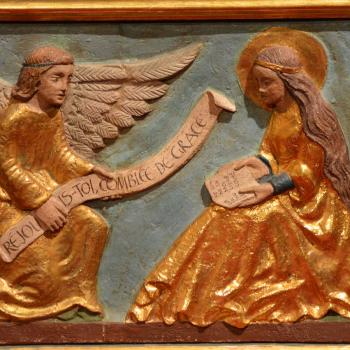Editors' Note:This article is part of the Public Square 2014 Summer Series: Conversations on Religious Trends. Read other perspectives from the Jewish community here.
The Pew Research Center's Portrait of Jewish Americans, points to one critical inference: the coming shrinkage of what may be termed the "Jewish Middle," those located in the central region of the Jewish identity spectrum, roughly encompassed by those affirming a Jewish denominational identity other than Orthodoxy. The number of middle-aged non-Orthodox Jews who are engaged in Jewish life is poised to drop sharply in the next twenty to forty years.
The Centrality of the Jewish Middle
As a group, on average, those in the Jewish Middle are not as consistently and intensely engaged in Jewish life as are the Orthodox. And, on average, those who call themselves Conservative, Reconstructionist, or Reform are more active and committed than those call themselves "partially Jewish" or "Jewish and something else," "Just Jewish," or atheist, or agnostic, or no-religion Jews. (Jews of No Religion should not be confused with committed secular Jews, small in number in the U.S., who, by definition, are deeply connected to Jews and Jewish life and culture.)
The drop in the number of Jews in the middle of the identity spectrum is visible today only among children and young adults. But, in coming decades, the adverse impact of the small number of children in their households will become increasingly visible, clear and apparent. Put simply, the number of middle-aged non-Orthodox Jews who are engaged in Jewish life is poised to drop sharply in the next twenty to forty years. And, absent significant policy changes, their numbers will continue to drop for years to come.
Aside from an axiomatic, if not primordial, commitment to the Jewish identity of every child of a Jewish parent, why should we care if thousands of children of Jewish parents are raised as non-Jews or barely-Jews? Of what consequence is it that coming generations contain far fewer engaged non-Orthodox Jews?
The critical concern is that a large Jewish Middle is vital to the sustenance of so many major institutions in Jewish life. Not only do most engaged non-Orthodox Jewish feel that being Jewish is very important to them, as they say in response to questions on numerous surveys, including the Pew study. Most feel likewise about Israel and about being part of a Jewish community as well as other aspects of being Jewish.
Moreover, they manifest their commitment in affiliative behavior that directly and indirectly benefits the institutions they populate and support. Clearly, Conservative and Reform synagogues depend heavily upon these moderately to highly affiliating Jews. So too do Federations, JCCs, and numerous Jewish organizations. Jews of the Middle patronize Jewish cultural events, museums, periodicals, and publications. They are the mainstays of a vast Jewish educational enterprise on behalf of their children. In this regard, Jewish day and overnight camps, youth groups, Israel trips, Jewish Studies programs, and day schools all immediately come to mind. All these features of contemporary Jewish life—and more—depend upon hundreds of thousands of Jews who, while not Orthodox, nevertheless display high rates of Jewish engagement however measured.
One big reason for the falling population is the low fertility rate—about 1.7 children for non-Orthodox Jews, not all of whom grow up to identify as Jews. Among the offspring of the intermarried, just 43 percent currently identify as Jews. Of the 7.2 million adults who had one or two Jewish parents, 5.1 million identify as Jews, but 2.1 million of them (about 29 percent) do not identify. By projection, fewer than 8 percent of intermarried couples' children marry Jews. Since a stable population requires a birthrate of 2.1, an estimate of 1.7 immediately suggests an intergenerational decline of as much as 19 percent.
But not all of the 1.7 born to Jewish parents are raised as Jews, or, more critically, grow up to identify as Jews. From the Pew study we can learn of the extent to which today's adults—those raised by inmarried or intermarried parents over the last few decades—currently identify as Jews. Of adults with two Jewish parents, almost all the grown children (adults today) identify as Jews. (By Pew's definition, Jews qualify as such if they identify their religion as Jewish, or if they consider themselves Jewish and have no religion and were raised or had a parent who was Jewish. Those with any identity as a Christian or other non-Jewish religion did not so qualify.) However, among those with just one parent who was Jewish (the offspring of the intermarried), just 43 percent currently identify as Jews.




